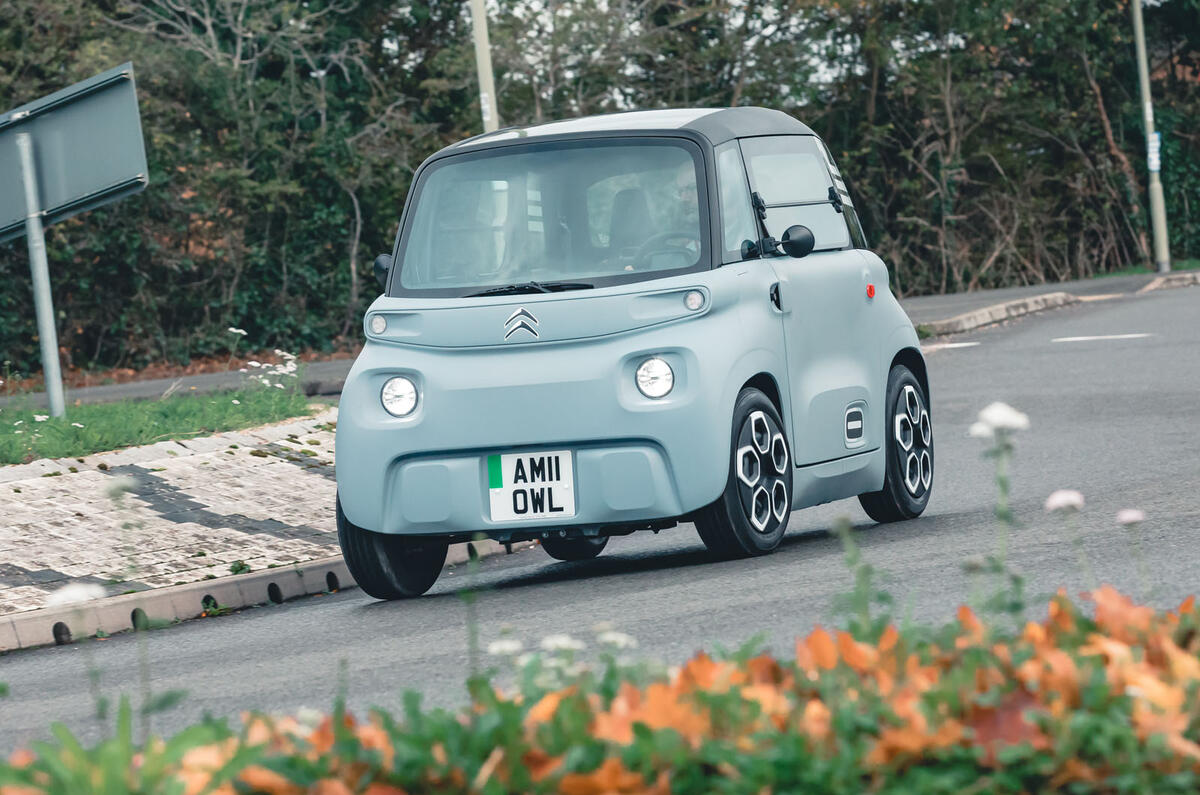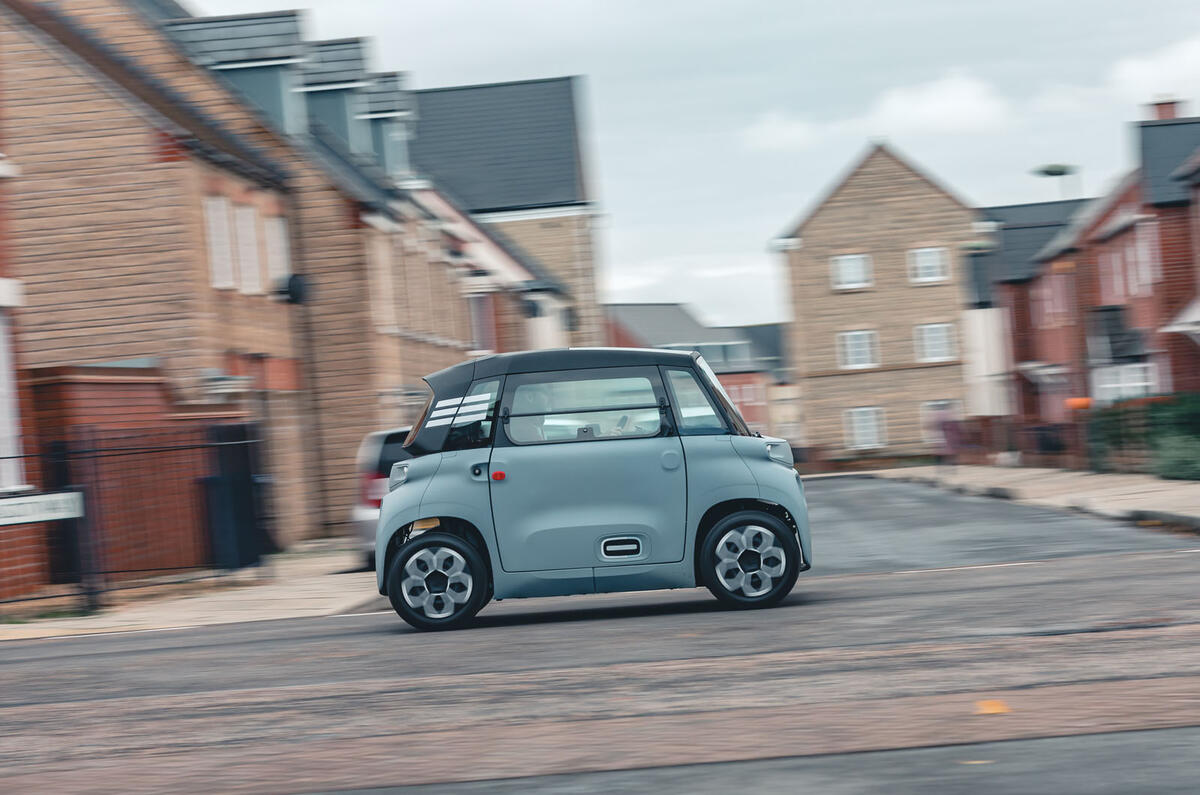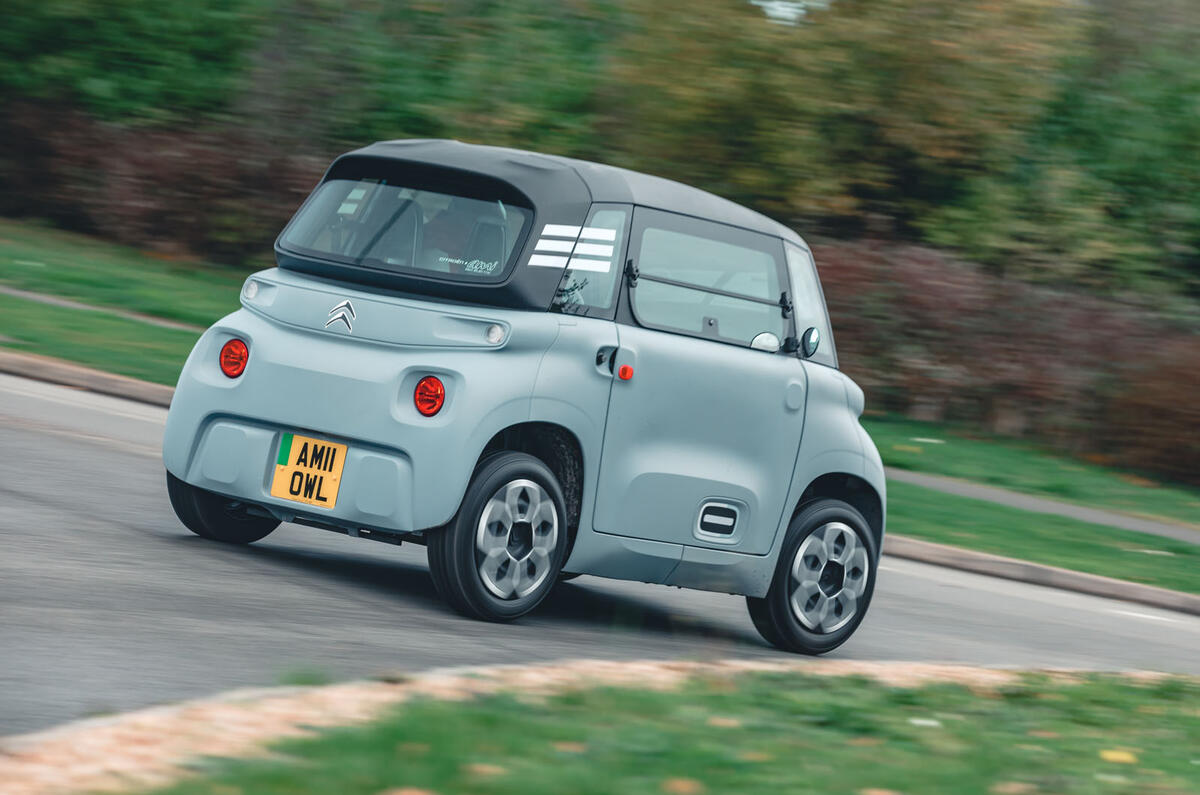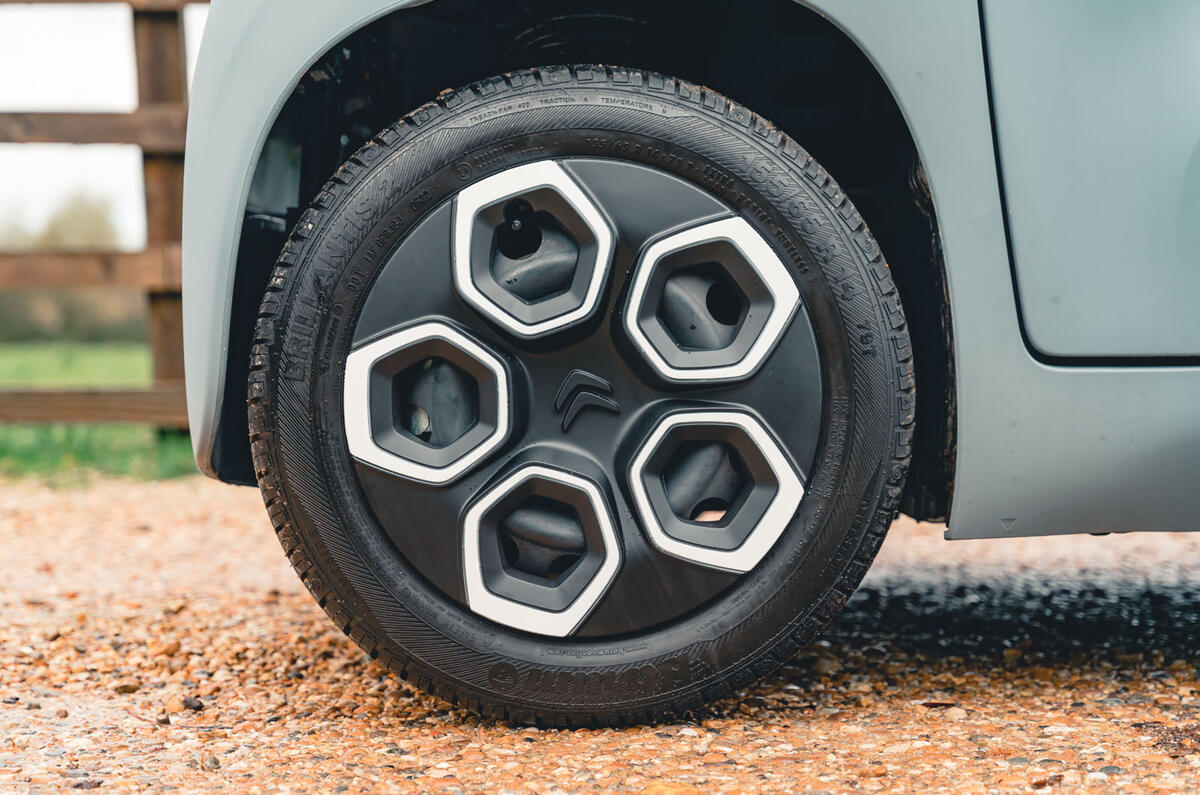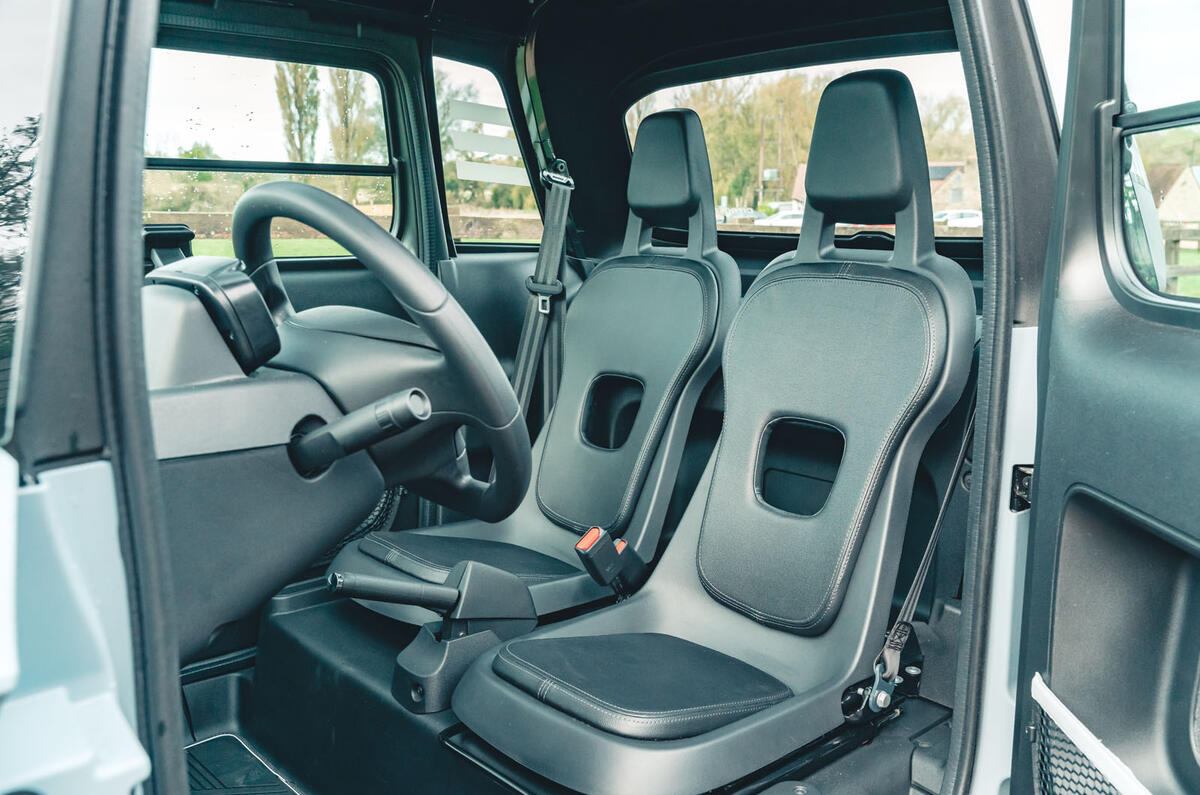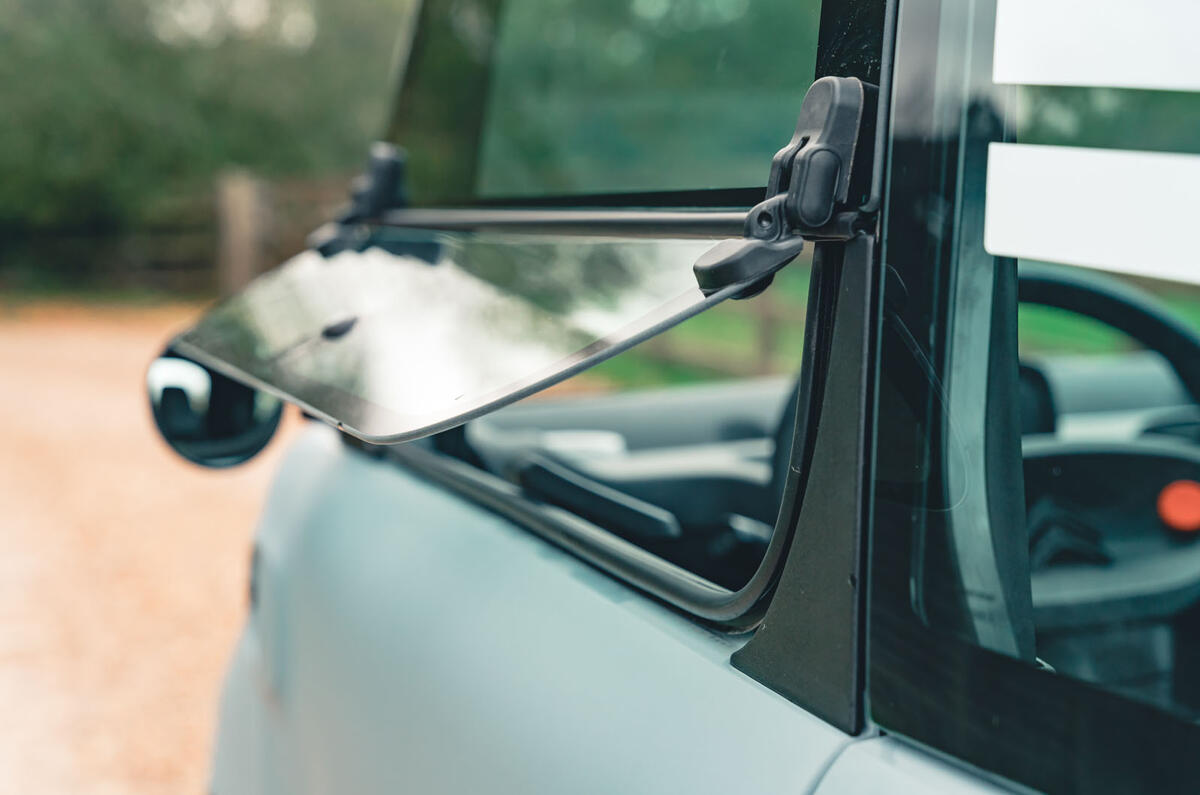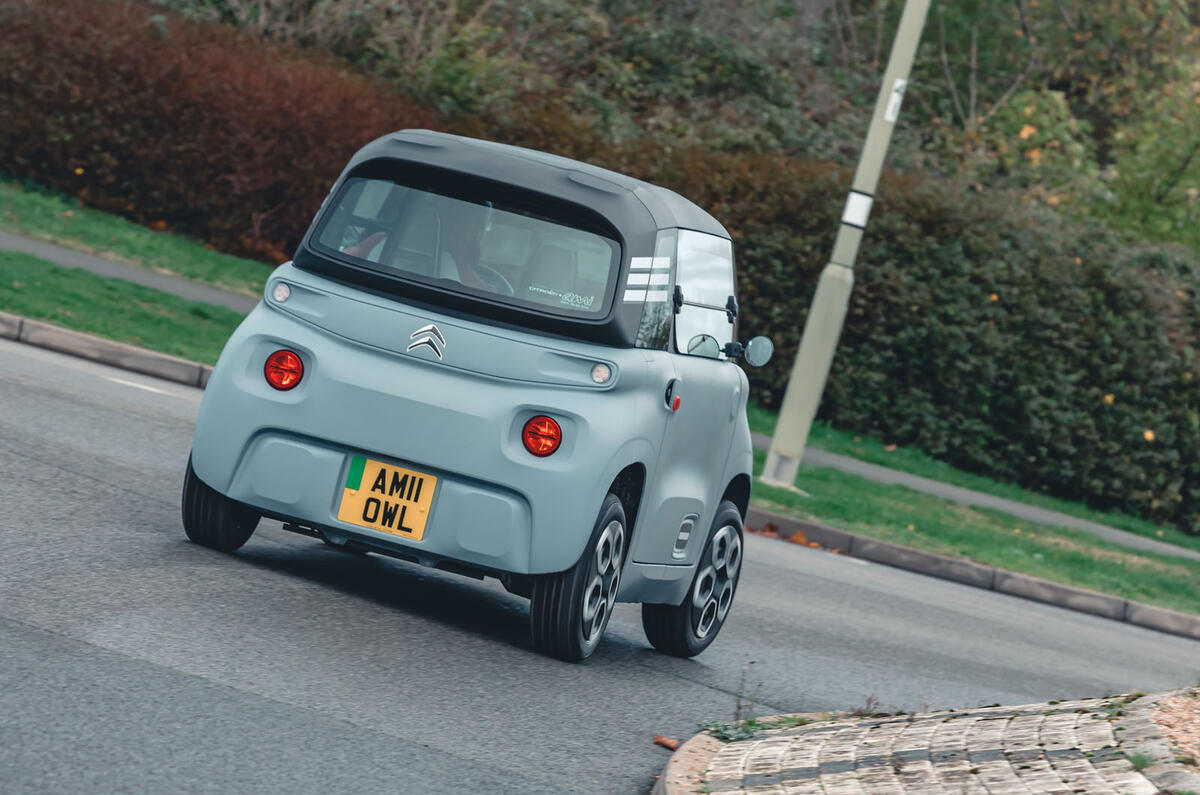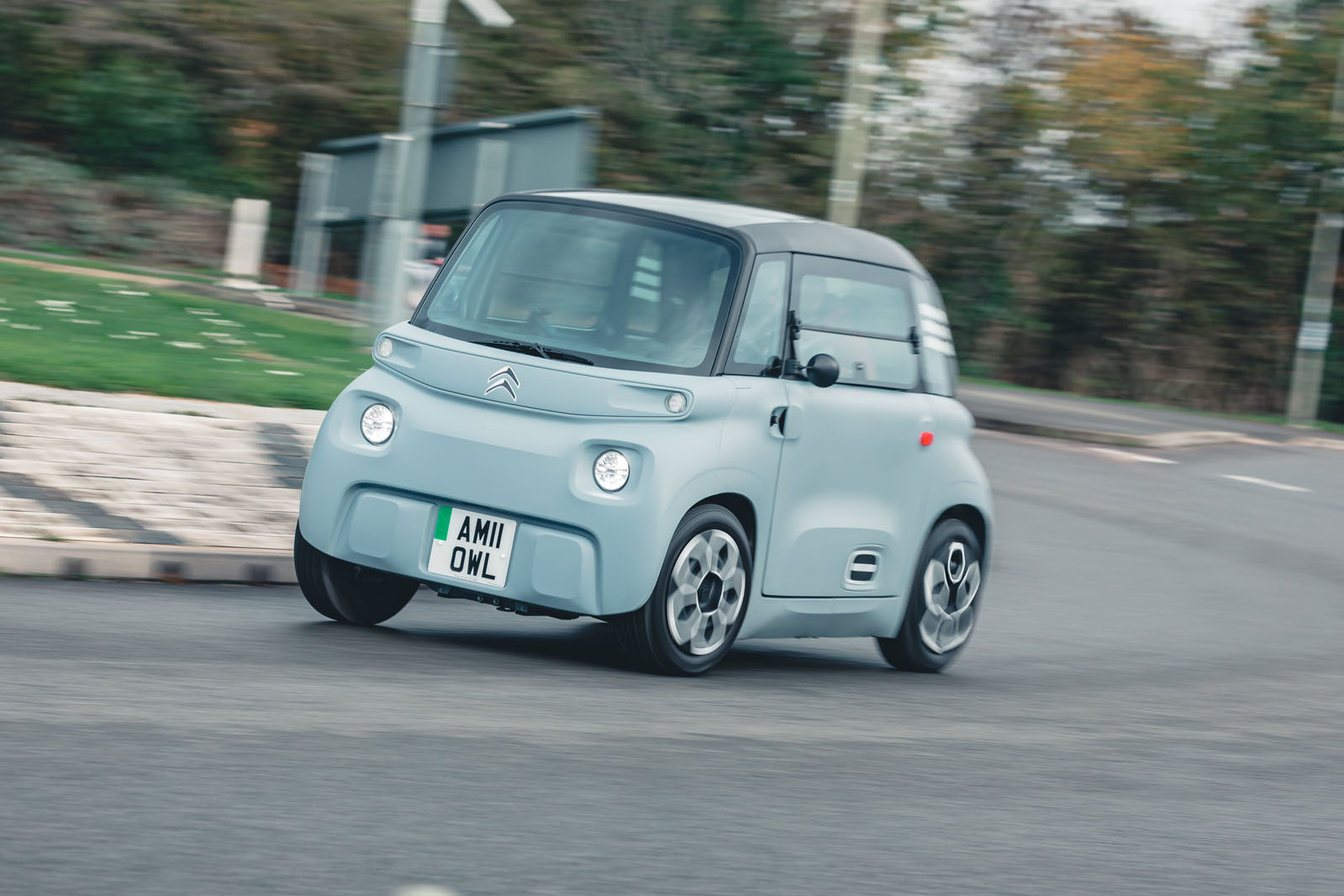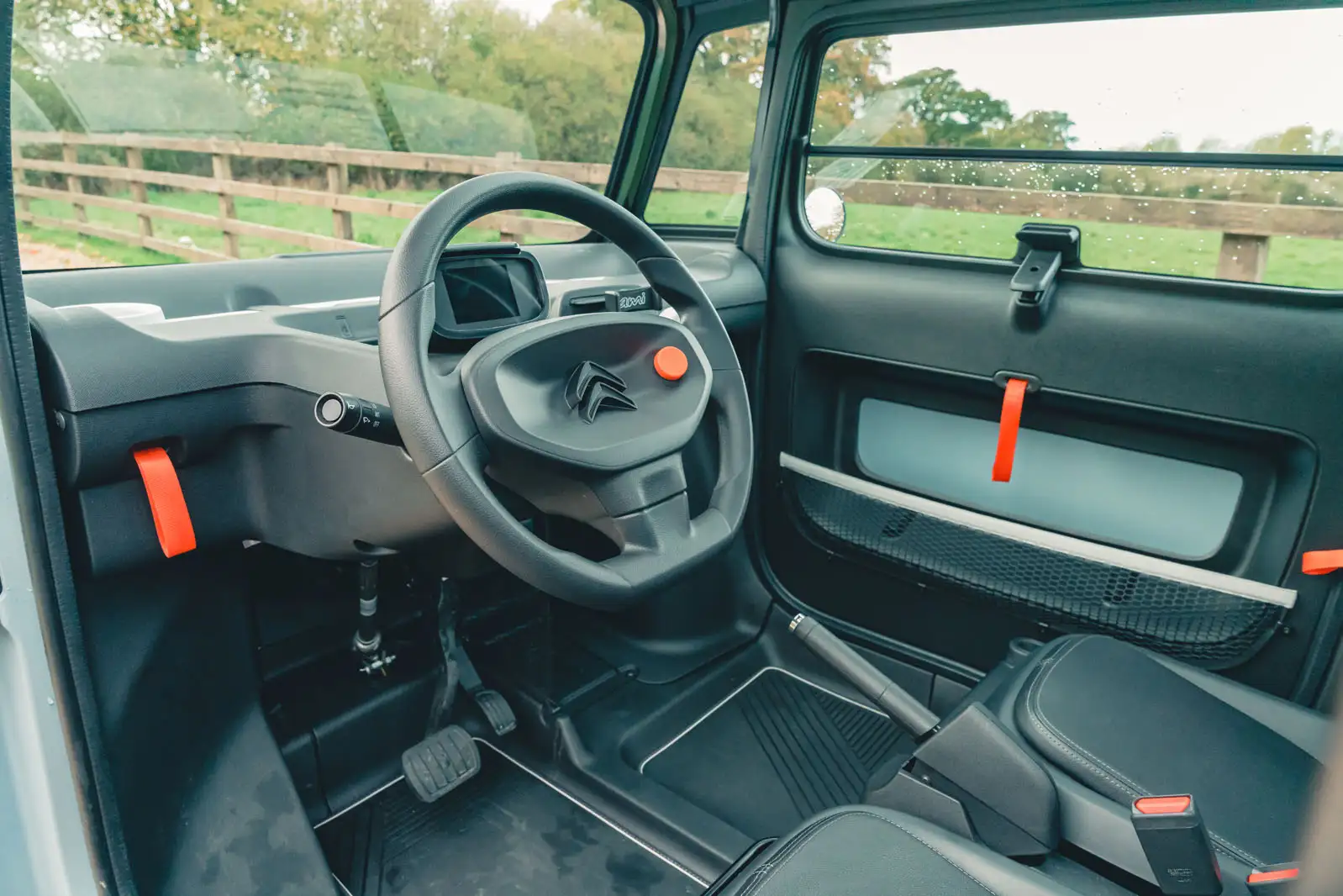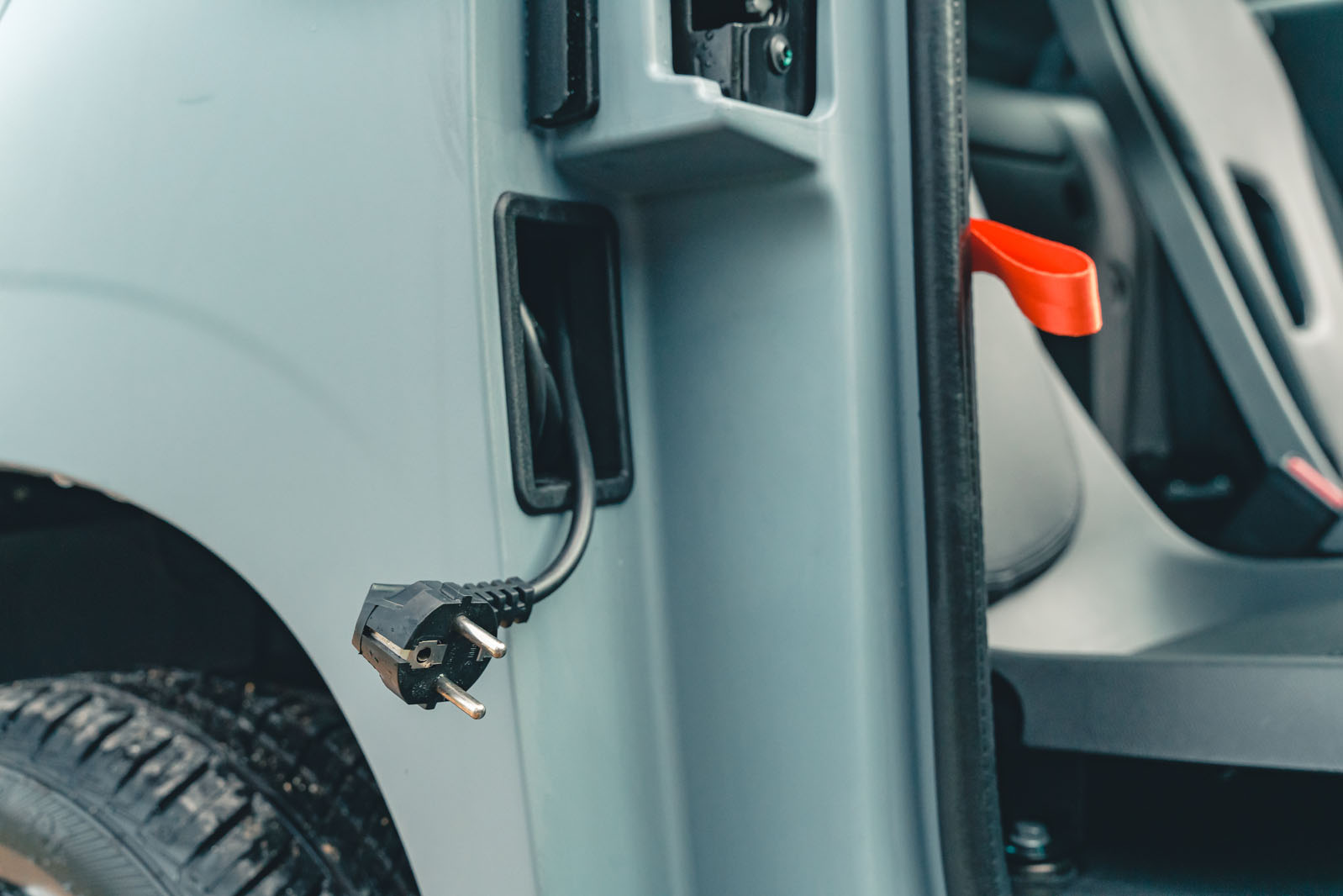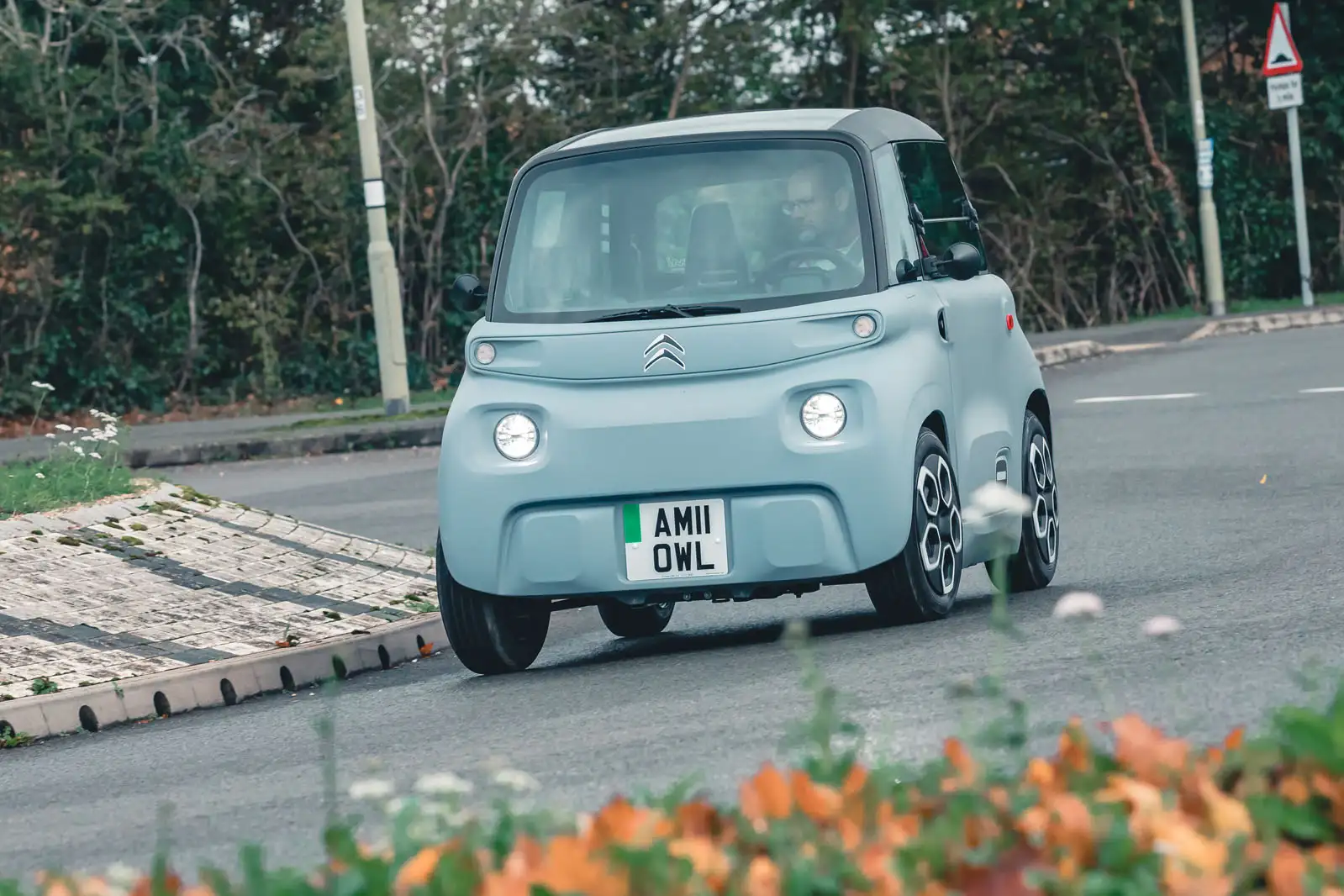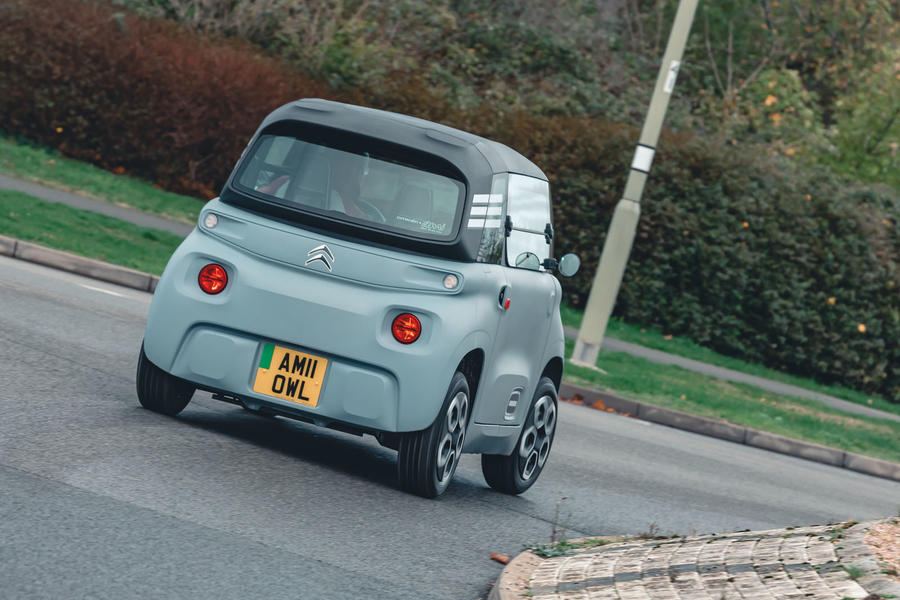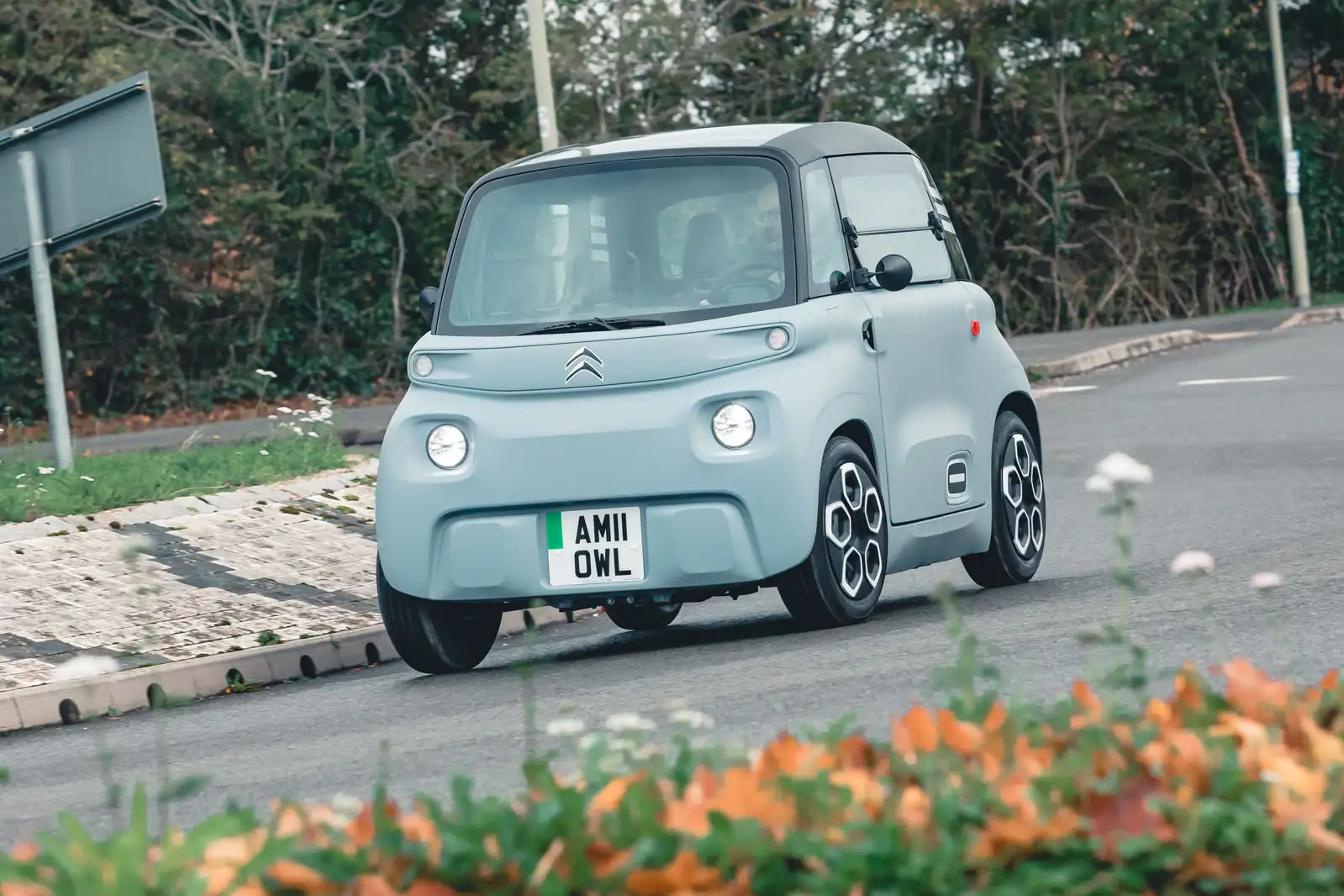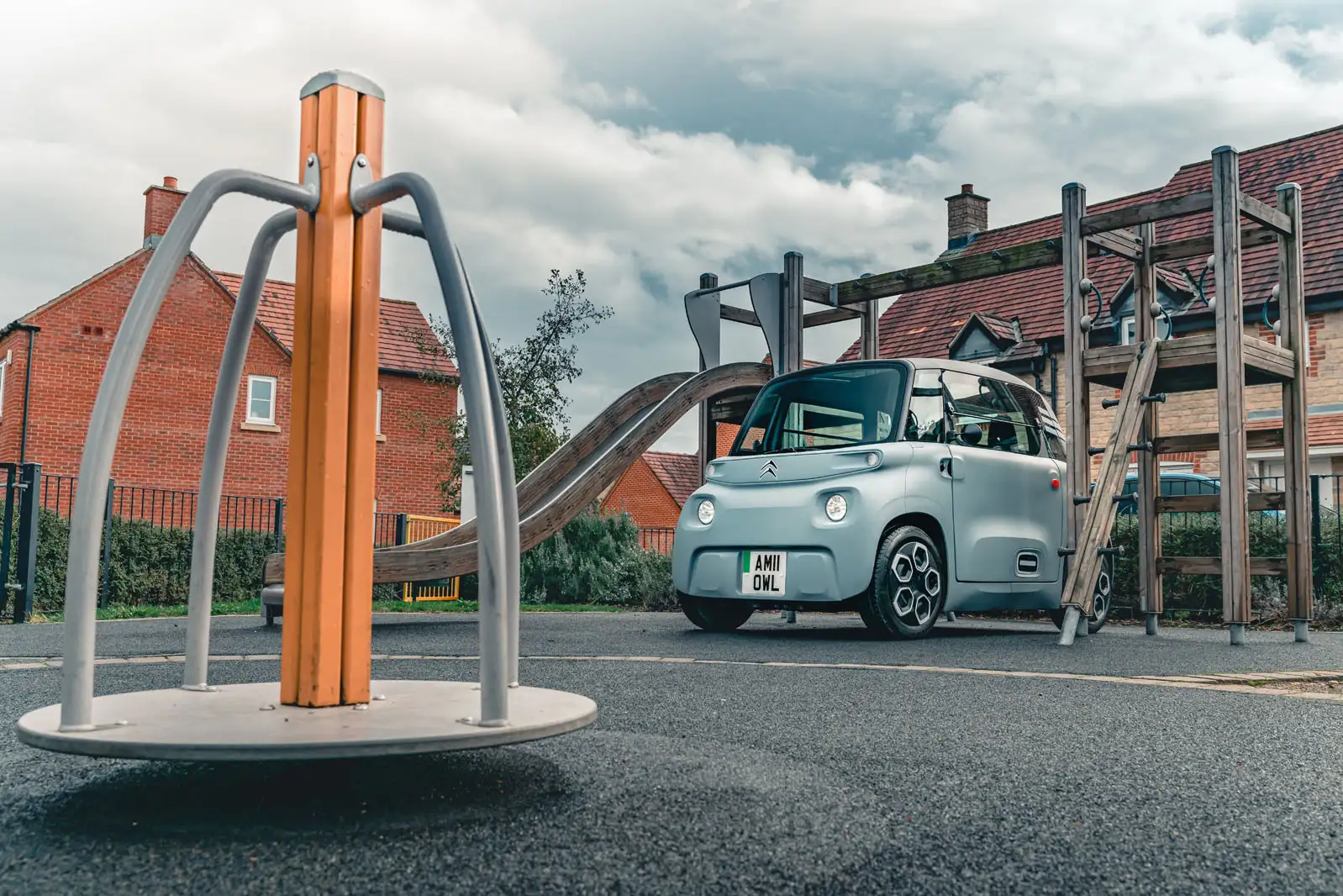What’s this? A key? Actually we don’t mind that at all, although it’s a bit old-school that the key to unlock the doors is separate from the one that operates the ignition.
The doors open wide and easily, and are extremely light. The Ami is low and small so it’s no easier to get in or out of than a conventional car – though you are likely to have more space around you in a car park.
Inside you will find two seats, a steering wheel and a lot more plastic than on the outside.
Although this is a basic vehicle with little equipment, we will spend more time talking about the interior than in most luxury cars. Not because there’s too little to talk about in the ‘Performance’ section, but because honestly the Ami is all about its inside. More than anything else it is, because it’s so few steps up from walking, a place to sit and be transported. Private transport and mobility in its purest form: and there’s something to like about that.
Two seats, then. They’re both hard and the driver’s is the only one that slides fore and aft. The backs are fixed, as is the steering wheel and two pedals. There’s a wiper and indicator stalk, and three buttons for the hazard warning lights, fan and heater.
There’s no central interior mirror but two small round external ones that can both be reached through the half-windows, which unlatch and swing upwards like a 2CV’s. You can reach them both from the driver’s seat. You can also see, perhaps alarmingly close to your head, the welded steel framework that you wouldn’t want to make contact with in an accident. Quadricycles do not undergo the same crash tests as cars.
Flick the key. As a driver, look down to your left and you will see Drive, Neutral and Reverse buttons by the seat. There’s a conventional mechanical handbrake. As for controls, that’s almost your lot.
There is, however, a place to secure a phone on the dashboard, with a USB socket and an optional final button on the steering wheel, which would, if you set it up right, activate the voice control on your phone so you don’t have to touch the screen.
There are neat touches elsewhere as the Ami makes a virtue of its basicness. The plastic cubbies on the dash are removable – the closest you can get to changing the car’s colour – but here matched to the colour atop the broad netted door bins and the fabric door pulls. A netted divider creates space for a carry-on-sized bag beyond the passenger footwell, though the hook above it is essential to prevent anything in there from toppling out. Given there’s a relatively flat open floor, having loose groceries rolling around by the driver’s feet is a suboptimal situation.
There’s a small area behind the seats (600x300x260mm) that would take shopping bags, but otherwise the footwell is the only storage area – and the rear window doesn’t open to post long loads through.
Citroën expects that many Amis will be used as urban delivery vehicles – the payload is 95kg and if you spec the Cargo pack, there’s a better divider that stops boxes falling onto your feet, with 260 litres of space beneath it.
Multimedia system
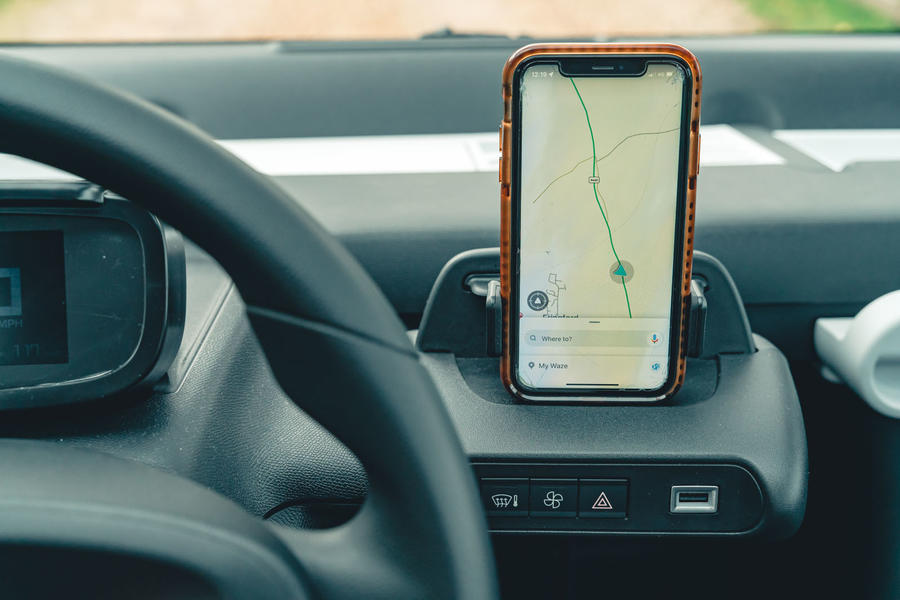
The Ami comes with no infotainment of its own, so if you really want to assess the sounds and navigation, you’ll have to take a look at your phone instead.
There is, though, a phone holder that slots into the dash and there’s a small shelf beneath it on which to rest the device. It grips a device well and you can move it and spin it depending on your preferred orientation. And it’s honestly no more difficult to push a button on a screen this way than on any conventional car’s touchscreen. A USB charger socket sits beneath it, too.
Models above the base Ami include a piece of hardware that allows the smartphone to hook up to a steering wheel button that, with the right app download, then allows one-push voice control. If you do want to hear some sounds loudly, though, you’ll have to provide your own speaker – and remember there’s only one USB socket to power whichever devices you put into the Ami.


